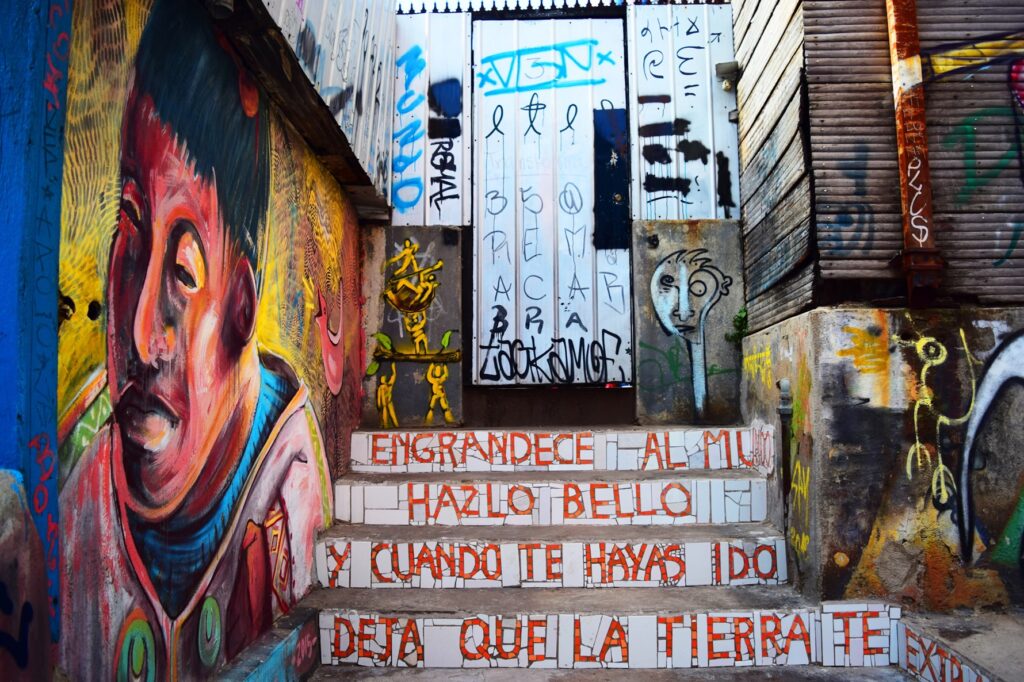
Hi everyone, if you’re free on June 5th at 10am Pacific Time, my friend and colleague, Ananda Valenzuela, will be leading a FREE virtual workshop called “Exploring Power Dyamics and Principled Accountability.” It’ll be bilingual in English and Spanish. Register here.
Last week, I attended a production of “For Colored Girls Who Have Considered Suicide/ When the Rainbow is Enuf” by Ntozake Shange, directed by Michelle N. Matlock. If you’re in the Seattle/Tacoma area, check it out; it plays until June 8th.
Led by an all-women-of-color cast, the interwoven pieces combine poetry, monologues, singing, and dancing, vividly illuminating the challenges women of color—especially Black women—face, while highlighting their strength, joy, and unbreakable spirit. I hadn’t heard of it before and went mainly to support a friend who was one of the performers. I left with a reminder of how powerful and instrumental the arts are for society—especially during these horrible times.
Since the layout was arena-style, I was able to see the facial expressions of other attendees. An older white couple sat directly across from me. At the start of the production, they sat crossed-armed, stone-faced, like they’d been dragged there against their will. By the time we got to the piece “somebody almost walked away wid alla my stuff,” they had started leaning in. By the end of the show, they even managed one or two slight smiles.
With the continued attacks on DEI, putting on and attending a play focused on women of color felt like an act of resistance. Because it is.
Throughout history, art has been a vital part of fighting injustice, especially during fascist regimes. Art, artists, and arts organizations have always been a line of defense against authoritarianism. Art is a mean of speaking truth to power. It’s been a vital tool to wake people up and mobilize them. For examples:
- Picasso’s Guernica depicted the horrors of war and Franco’s fascism.
- The Brigada Ramona Parra, an collective of artists, painted anti-fascist murals in resistance against Pinochet.
- The Living Theater used experimental and radical performances to critique militarism, capitalism, and state violence across continents.
- The Studio Museum in Harlem supported Black artists and fought against racism
Even when it’s not explicitly political, art is always doing political work. It reminds us of our humanity. It creates joy and hope and elevates the voices of the marginalized. It breaks isolationism, builds community, and allows us to dream of just and equitable futures. All of that makes fascism harder to sustain.
Which is why this regime has been cutting funding for the arts, significantly reducing the budget of the NEA (National Endowment for the Arts), which in 2024 was just 207M, a pitiful .003% of the federal budget. Defunding the arts by this administration is not neutral; it is an act of political warfare designed to demoralize us all so we can’t fight back as it dismantles democracy.
In response, I’m glad to see some foundations and donors are stepping in to try to fill the gaps. We need more funders to join in. As vital as they are, the arts have been facing funding cuts over the years, experiencing one of the steepest declines in support over the years. Funders, and all of us, need to understand that art is not something that’s just nice to have when other “more important” things have been taken care of. That philosophy devastated the arts during the pandemic, when many funders diverted support from the arts to basic needs, not understanding that art is a basic need.
So, to funders, increase your payout rates and significantly boost funding for the arts. All forms of it. And especially arts and arts organizations led by and centering the most marginalized people and communities: trans people, immigrants, people of color, disabled people, and others being directly targeted by this administration.
The rest of us should support our arts organizations and artists. Donate to arts nonprofits. Go see a show. Become a member. Support artists on platforms like Patreon. Take a class. Avoid using AI to replace human-made art.
And of course, take time for yourself to draw, paint, write a poem, dance, make some music, audition for a play, or whatever art form makes you happy. By creating art, you’re building community and reaffirming our collective humanity. That’s how we find the strength to fight.
To all my colleagues who are artists and/or who work or volunteer at arts organizations, thank you for your work, your vision, and all the joy and tears and insights you bring. Seeing “For Colored Girls” made me feel more hopeful and full of fire than I had felt in months (Heck, it kind of made me want to do my April Fool’s joke one-man show for real!)
I know how frustrating it must be to see how much society relies on the arts and yet constantly underappreciates you all, especially during times when it needs you most, like during Covid, and now this descent into dictatorship. Just know: Your work matters. It always has.
Discover more from Nonprofit AF
Subscribe to get the latest posts sent to your email.

